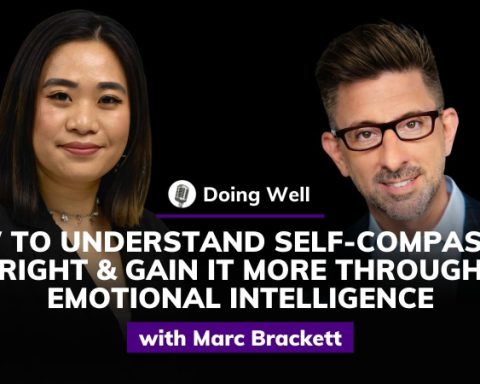Who am I? What do I want? What is the meaning of my life? What do I do?
These are some common questions that someone may have at some point lifetime. Understanding the self and knowing the meaning of life is essential for the continuation of human beings. Reaching the “True Self” and having a purpose in life are known to have significant implications such as improvement and maintenance of well-being, better physical health, self-development, and even reduce mortality rate across the lifespan.
Given the importance of understanding the self, it is important to know how to do just that. Mindfulness is the answer, the key to unlocking the gate to the higher self. It has been known that mindfulness improves individuals’ awareness and focus on the body.
How mindfulness relates to a higher sense of self? First, you need to understand what mindfulness is.
In this science-based article, you will know the origin of mindfulness, how it relates to the sense of self, its benefits, and several practices that you can do to reach a higher sense of self. You will be able to reach a higher sense of self with mindfulness practice and an understanding of what is inside you and the world you live in.
Understanding mindfulness
From a historical perspective, the concept of mindfulness was first introduced through the Buddhist concept “sati”. “Sati” was translated from Pali word by a British scholar, Thomas William Rhys Davids in 1881. The translation was based on his understanding of the Mahasatipatthana Sutta. “Sati” stressed the impermanence of all phenomena, and the repeated application of this awareness to every experience (Sun, 2014).
Creswell (2017) explains that mindfulness grounds attention and awareness in one’s present moment of experience. Both attention and awareness are focused on the body sensations, emotional reactions, mental images, mental talk, and senses. This monitoring feature of mindfulness is known as “watchfulness” or a “lucid awareness of each experience that presents itself” by scholars.
Mindfulness isn’t just being aware and paying attention to what is happening in the present moment. Being mindful also means allowing, or being non-judgmental or non-evaluative about present moment experience (Non-judge) and refraining self from impulsive reactions to the experience (Non-React) (Baer et.al., 2006).
The most common practice of mindfulness is meditation: a practice of “self-regulation that focuses on training attention and awareness to bring mental processes under greater voluntary control and thereby fostering general mental well-being and development and/or specific capacities such as calmness, clarity, and concentration” (Davis & Hayes, 2011). Mindfulness meditation is a specific way of paying attention, a process of non-judgmental awareness, and an attitude of openness and acceptance (Xiao et.al., 2017).
Mindfulness isn’t exclusively only practiced in meditation. It can be practiced everywhere and at every time.
How mindfulness relates to the sense of self
The main purpose of mindfulness is to bring awareness and attention to the body in the present. Mindfulness, both in Buddhism and psychology, is viewed as the key to understanding the nature of the self and obtaining spiritual well-being (Xiao et.al., 2017).
Numerous known studies explore the relationship between mindfulness and self. In Western societies, mindfulness is linked to many aspects of the self such as self-exploration, self-experience, self-transformation, self-compassion, self-acceptance, self-perspective change, self-consciousness, self-concept, self-deconstruction and reconstruction, self-referential processing, and so on (Xiao et.al., 2017). Because of its close relationship, mindfulness is practiced to improve positive self-attitudes among people.
Sense of self is “an individual’s feeling of identity, uniqueness, and self-direction” (APA, n.d.). Individuals need to understand their sense of self. Individuals can start to view themself as temporary, interdependent, and shifting dynamically, rather than as a permanent, unchanging entity (Xiao et.al., 2017). By adopting this perspective, one should be able to view the impermanence of life and have a deeper understanding of the meaning of life (Chu & Mak, 2019).
Mindfulness is known to increase authentic self-awareness, therefore, encouraging individuals to perform behaviors that are consistent with their needs, values, and interests. It has been suggested that mindfulness boosts “authentic functioning” (being aware of and regulating oneself) and helps individuals to become aware of their “true self” (Chu & Mak, 2019). Thus, mindfulness may act as an ability to discern understandable patterns in life to make the entirety of life coherent and comprehensible.
Benefits of having a higher sense of self through mindfulness
The main purpose of understanding both mindfulness and a sense of self is that you will be able to experience a sense of self as a temporary, interdependent, and impermanent entity. It has been known that mindfulness affects many aspects of life, including the self. But, what exactly are the benefits of mindfulness regarding self?
Enables self-development
Reaching a higher sense of self is also a self-development process. You should be able to develop the desired attitudes toward yourself, others, and your system of values. Those individuals may show some higher quality of self such as being responsible, reflective, aware, self-accepting, self-respecting, integrity, congruent, and so on (Xiao et.al., 2017). Therefore, reaching a higher sense of self is one step ahead of the “true self”.
Clarifies purpose in life
As a trait, mindfulness enhances your awareness of self and contributes to a sense of purpose in life. This way, mindfulness may foster the sense of the main goals of life, aims, and direction of where your life is headed. Thus, life is experienced as more meaningful as the person becomes more aware of his/her purpose in life.
Enhances meaning of life
There is a mechanism of mindfulness to reach a higher meaning in life. Mindfulness approaches your ability to attend to yourself with an open attitude, thus cultivating the knowledge and awareness of internal constructions and processes of self (Chu & Mak, 2019). Therefore, mindfulness fosters the authenticity of self and can improve the meaning of your life.
Mindfulness practices to reach a higher sense of self
The most common practices of mindfulness for a higher sense of self are mindfulness meditation and Mindfulness-based Interventions. But, each practice has its domain of focus when it comes to learning to be mindful. There are four domains of mindfulness that need to be mastered to reach a higher sense of self (Nilsson, 2014):
Body
The body is also known as the physical dimension of mindfulness. Practicing mindfulness in the body dimension is focusing on the body state of the being. This practice aims to heighten awareness with the sense of sensory presence and attention in everyday activities such as working, cleaning, eating, and so on. So, your activity of the day won’t be an “autopilot” but rather attended in the present.
There are several practices of mindfulness to improve body awareness such as Yoga, Body Scanning, and Meditation (either sitting or walking meditation).
Mind
The mind in this sense is the mental dimension of the being. To reach the higher sense of self, you must be able to resist and ignore the constant flow of thoughts, feelings, and desires of the conscious mind. Some challenges that you may face when practicing mindfulness mind such as restlessness, irritability, anxiety, and some unpleasant memories, suddenly emerge during the mindfulness practice. Those experiences are called “the monkey brain”, leading to difficulty to remain focused on what’s currently happening in the present.
With this goal in mind, practicing 15 minutes of focused breathing with standard mindfulness practice can lead to improved mental and emotional regulation, and also may reduce negative automatic thoughts.
Social
The social dimension is one of the most important aspects of mindfulness that needs to be cultivated. To reach a higher sense of self, you must be able to have empathy and compassion toward others. But first, you must cultivate these aspects among their closest circle of social life. To achieve this goal, individuals may practice any mindfulness activities that are mentioned above, within groups. Under the supervision of a competent instructor (as the leader), performing activities such as yoga and meditation can foster healthy interpersonal dealings among the members.
Existential
The existential dimension is the last aspect that needs to be understood. You must understand the importance of your existence. This dimension is essential not only for physical and mental well-being but also for giving you a broader sense of life.
To reach this essence with mindfulness practice, you should have personal balance and greater awareness of the present moment’s meaningfulness, through a self-reflection process of your life experience and also through active involvement in the world.
In conclusion
To understand the sense of self, you must understand what’s within yourself and what’s within the world you live in. Mindfulness can open the gate to a higher sense of self — the authentic self. Keep in mind that, mindfulness can be practiced with everyday activities like driving, working, doing chores, and so on. The key is to bring awareness and attention to the present moment. To reach a higher sense of self, it’s important to have a holistic mind, to realize the impermanence of things, to let go of what has been passed, and to look forward to life. That way, you will understand each essence of life, and the meaningfulness of each day, thus reaching enlightenment for yourself.
If you would like to learn more about mindfulness, visit the Wellbeing Science Labs. The lab uses the research of the Institute for Life Management Science to produce courses, certifications, podcasts, videos, and other learning materials. Check out the Wellbeing Science Labs today.
Photo by SHVETS production on Pexels



